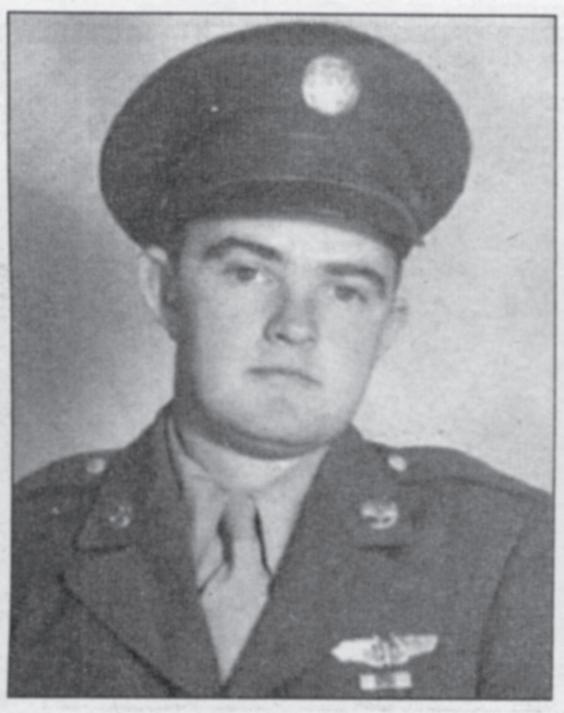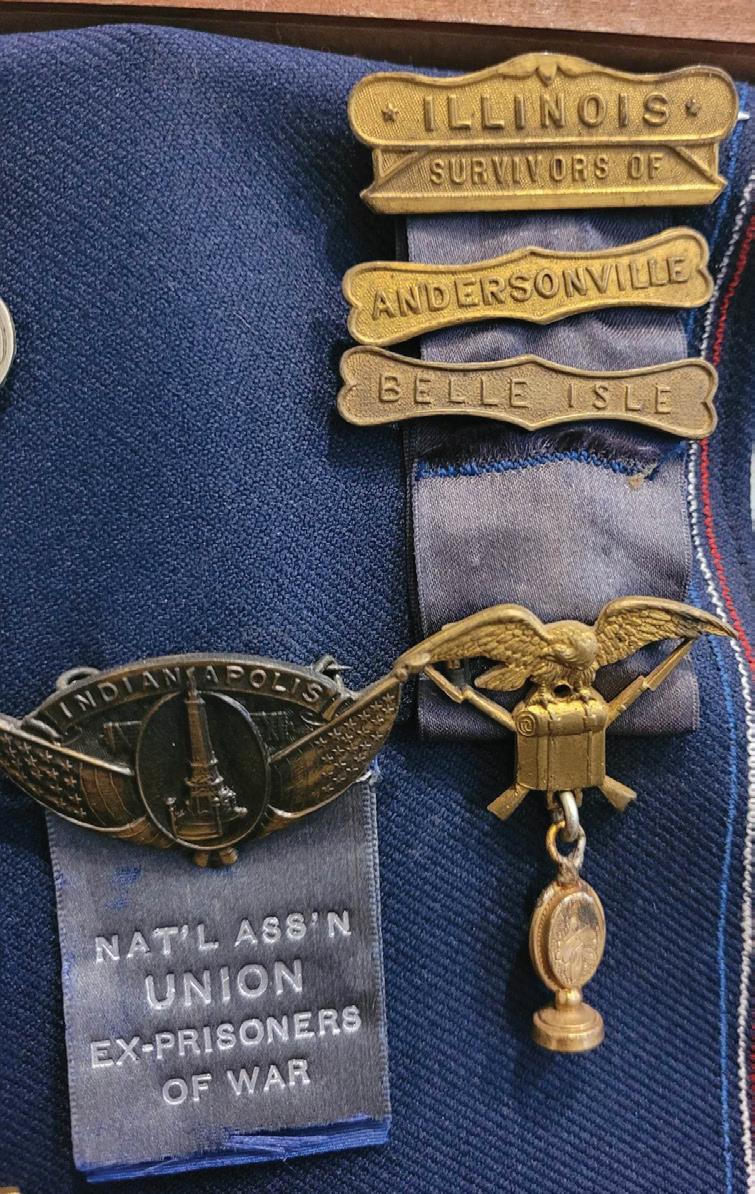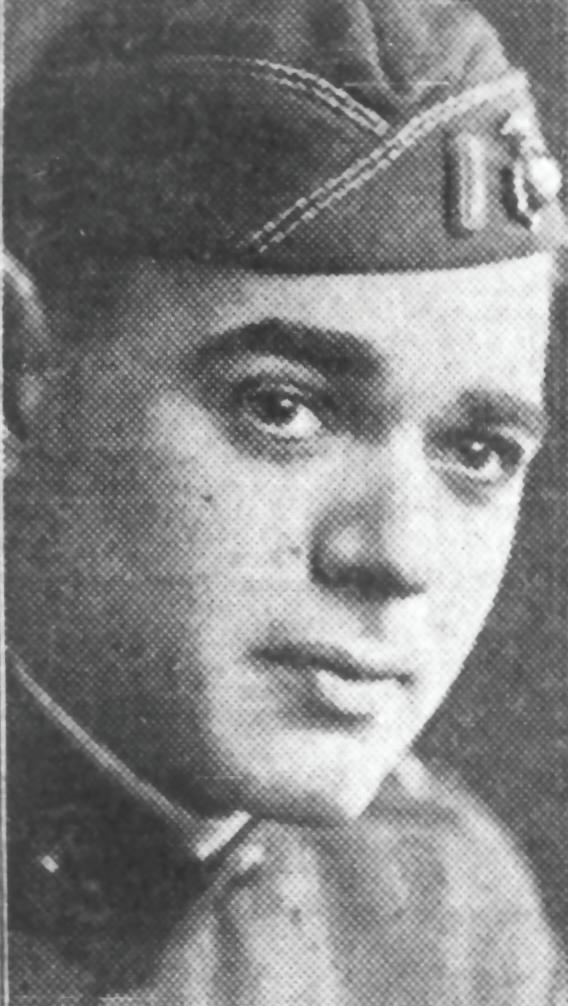
8 minute read
From the President’s pen
Exhibit offers a sobering trip back in time
If you had the chance to take a trip back in time, would you do it?
Advertisement
That opportunity recently presented itself to me, and I said a resounding “Yes!”
One of the features at the BCHS’s Veterans Exhibit in the Newell Bryant Museum in Princeton is an expertly assembled collection of more than 100 computerized oral interviews with local World War II and Vietnam veterans, some of which were conducted about 30 years ago.
I chose to listen to the Robert Eidenmiller interview. Bob was an Ohio farmer who married my first cousin, once removed, Ramona Fitzpatrick Eidenmiller. I knew Bob had served in the Army Air Force during World War II, but I didn’t know much else.
The interview started, and it was like I was sitting in a room next to Bob in 1994 as he told of his induction, training, the assembly of his 10-man crew, and the flight of their brand new B-24 bomber to Newfoundland, Africa, and finally to its new base in Foggia, Italy, where it was sent out with others on bombing missions over Nazi-occupied Europe.
Bob, a tail gunner, told of bombing raids on oil refineries. He told of raids in southern France. He told of a crash landing at his base. Most interesting were stories of his 10 days on the run in Yugoslavia after being shot down. Partisans helped the American crew escape to Italy. The casualty rates were sobering. Bob said air crews had a 41 percent fatality rate. About 80 percent suffered casualties of some sort. Wow!
Executive Director’s letter
Amazing year for BCHS!
Bob admitted he did not expect to survive the war. later he organized regular It was good to hear Bob’s voice. I’m glad I took that everyone to check the list of oral interviews and do
2023 has been an amazing year for the Bureau County Historical Society. We invited people to explore their history and they have!
Thanks to our members and donors, we opened our Getting to Know Grace exhibit in March. Then, we celebrated National Military Awareness month in May with a new Veterans Exhibit. The latter has been so successful that we are extending it through the end of the calendar year.
In this issue, we continue our exploration of county veterans. Jim Dunn takes a look at former U.S. Senator C. Wayland Brooks. Curator Jessica Gray discusses those soldiers who died in the Andersonville Prison, a notorious prisoner of war camp. How exciting it is to know that one of the Wright Brothers’ planes landed here while on a national tour.
Our goal this year has been to make our exhibits and stories about and relevant to the people of our entire county. Exhibit plans are already underway for 2024 and beyond.
Jessica Gray – Curator’s notes
If you haven’t been to the museum recently, you should stop by! The Newell Bryant underwent a dramatic freshening up in April for our wellreceived military exhibit in May. We have thoroughly enjoyed welcoming the public to view the exhibit, now extended through the end of the year.
As an organization, we have started the process to give the Sash/Stalter/Matson building a new purpose and plan for the future. We are excited to be unveiling a new Civil War Monument in front of this elegant building in September. In preparation for that, the former library will be getting a fresh coat of paint and some exterior maintenance.
There are so many unknown treasures in our county, and we intend to continue to discover them. As a private non-profit, we are completely funded by our members and donors. Your donations and memberships will help keep this thriving organization on track into the future. Our past is our future and we thank you for being a part of it!
Explore your History!
Lex Poppens
BUREAU
County Historical Society Board Officers

President – Jim Dunn



Vice President – Dan Martinkus
Treasurer – Lexi Mecum
Secretary – Eliott Wolfe
BOARD OF DIRECTORS
Steve Bouslog
Bill Bouxsein
N. Dana Collins
Stephanie Foes
Curt Johnson
Becky Kramer
Ann Lasson
Jon McCutchan
Joel Quiram
Herb Rhees
Tori Yepsen
EXECUTIVE DIRECTOR
Lex Poppens
MUSEUM ASSOCIATES
Jessica Gray – Curator

Mike Hult – Research
Pam Pratt – Sales/Sponsorships
We loved welcoming students touring the exhibit and telling them stories they’ve never heard about the brave men and women from communities throughout the county. Definitely the highlight of our time with them was giving them the opportunity to hold the 6-pound solid cannonball shot picked up by none other than Owen Lovejoy at the Second Battle of Bull Run. While preparing the exhibit, I came across 171 letters written by 142 different servicemen and women during the course of World War II. The letters were written to a Princeton chapter of a national organization called The Mothers of World War No. 2. The Bureau County men and women, serving across the nation and around the world during the war, gratefully acknowledged the receipt of care packages and birthday cards sent by the mothers’ group. It was easy to become emotional reading the letters from these individuals, imagining them so far from home and lonely for their own mothers, assuaged by a care package sent by caring and thoughtful women from their hometown.
Realizing that most families were probably not aware these letters were in our possession, I decided to include excerpts from some of them as part of our World War II exhibit, and we are now preparing to make copies of them available to family members. The letters are being diligently transcribed and scanned by our college intern, Brynn Hieronymus. The list of names of the letter writers will be available on our website and we encourage family members to reach out to us should they like a copy. We ask that you please make a donation for a copy of the letter so as to support our work preserving Bureau County’s history. We hope to see you soon and we thank you for your support of the Bureau County Historical Society.
COUNTY HISTORICAL SOCIETY NEWSLETTER | THE CHRONICLE | SUMMER 2023

Brooks’ life story deserves to be respected and retold
By Jim Dunn Bureau County Historical Society Board
C. Wayland Brooks was a United States senator, public servant, orator, politician and war hero who was born in 1897 in Bureau County and died in 1957 in Chicago.
Until about half a year ago, I had never heard of him.
“What’s wrong with me?” I thought, as curiosity drove my research into his remarkable but nearly forgotten career.
The more I found out about Brooks, the more I wanted to share those findings with the public. That led to me to write a 6,600-word lecture on Brooks, a Bureau Township native who as a grade schooler lived on a farm near Neponset, and deliver it May 6 at the Princeton Public Library during National Military Appreciation Month.
Let me share a condensed version in a slightly different order.
What impressed me first about Brooks was how serving in the U.S. Marine Corps during World War I brought out his finest qualities – courage, intelligence and athleticism.
He was 20 years old, finishing his freshman year at the University of Illinois when Congress declared war on Germany in April 1917.
Brooks wasted no time. He finished his freshman year and then announced to his family that his next stop would be a Marine Corps recruiting station.
His older brother, Russell, told him to wait until he could join him in Champaign so they could enlist together, and they did.
Brooks was gifted athletically and academically. He’d won the 440yard dash in the DuPage County track meet as a high school senior. He’d also won the county oratorical contest. His summer job was to carry loads of bricks to a brick
Andersonville Heroes

By Jessica Gray – Curator
orders to company commanders, whose names he had to know, and to pick up a gun from a dead Marine now and then and pick off a Hun for himself.”
Brooks helped the Marines stop the German advance, which was deemed a turning point in the war. What an accomplishment for a son of Bureau County!
The Marines’ next battle, Soissons, would be Brooks’ last. On July 19, he was wounded seven times in less than an hour by shrapnel and machine gun fire, including a severe injury to his foot.
While a patient at Base Hospital No. 13 at Limoges, France, Brooks learned of the death from influenza of his brother, Russell.
Brooks’ work for the war effort did not end after the armistice.
Working at a museum affords one the interesting opportunity to tell untold stories, or rather, unearth stories that have been forgotten –this is one.
In the Museum’s collections is a newspaper clipping dated May 30, 1865 from the Chicago Tribune with the headline “The Andersonville Martyrs: List of Illinois Troops Who Starved in Prison at Andersonville, Ga., from March 7, 1864 to January 1, 1865.”
“Prison” is a loose term –Andersonville was a 26.5 acre walled camp with minimal shelter, contaminated water, and rampant disease. 45,000 Union prisoners were held there; 12,920 died and were buried in a cemetery just outside its walls.
I was surprised to see in the article the names of nine men from Bureau layer, which required strength and stamina.
County who served in the NinetyThird Regiment Illinois Volunteer Infantry.
The book History of the Ninety-Third Regiment Illinois Volunteer Infantry, written by Aaron Dunbar of Dover and Harvey Trimble of Princeton, is a treasure trove of information. It extensively details the regiment’s movements throughout the war and lists every man and what happened to him, including whether he was taken prisoner and died under Confederate control. There also exists online the invaluable resource “A List of The Union Soldiers Buried at Andersonville,” in part compiled by the efforts of famous nurse, Clara Barton. The list of names is organized by state, and Illinois’ list of dead is 5 pages long.
The Marines were getting quite a specimen, and they put him to work in France during the crucial Battle of Belleau Wood in June 1918 as the Marines stepped in front of a relentless German advance on Paris. Brooks was ordered to maintain communications between commanders in the rear and four Marine Corps companies in the front. His athleticism and smarts were on full display on the timberfilled battlefield.

As the Chicago Tribune later reported: “Brooks’ job (he was then a corporal) was to hold the liaison, to keep four companies in contact with each other, to see that none got ahead of the others, to carry
After recovering from surgery at a naval base near Chicago, Brooks volunteered to give speeches to promote the war effort. Using his oratorical skills, he gave more than 50 speeches that encouraged donations to the Red Cross, YMCA and Victory Loan bonds between December 1918 and August 1919.
As he spoke in towns across Illinois, Iowa, Wisconsin and Minnesota, Brooks made sure he told his audiences of the bravery of America’s fighting men in France. He urged continued support for the troops, and he called on the public to never forget those who died.
“Remember them, and let that memory urge you on to be better Americans,” he said.
Brooks, remember, was only 21 and 22 years old while on his successful speaking tour. I remain in awe of that effort.
After the war, Brooks married, fathered a son, earned a law degree, worked as assistant state’s




